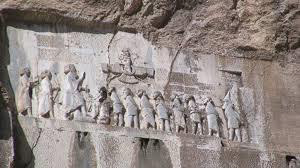
In the heart of every seeker lies the quest for truth, a flame that burns incessantly, guiding souls towards the essence of belief and the esoteric understanding of faith. Zoroastrianism, one of the world’s oldest monotheistic religions, holds this flame with reverence, symbolizing the light of Ahura Mazda, the Wise Lord. Similarly, Islam, with its profound spiritual dimension especially articulated through Sufism, cherishes the light of divine guidance bestowed upon humanity. This essay ventures into an exploration of Zoroastrianism through an Islamic lens, particularly from a Sufi perspective, aiming not to overshadow but to illuminate shared paths of spiritual wisdom and understanding.
At the heart of Zoroastrianism is the duality between Ahura Mazda (the Wise Lord) and Angra Mainyu (the Destructive Spirit), representing the eternal battle between good and evil. This concept mirrors the Islamic belief of a continuous struggle within the human soul between one’s lower desires and the higher, spiritual self, a theme deeply explored in Sufism. Sufis, in their pursuit of closeness to God, engage deeply with the internal struggle (jihad al-nafs) to attain spiritual purity, which resonates with the Zoroastrian practice of good thoughts, good words, and good deeds.
Furthermore, the Sufi understanding of Tawhid, the oneness of God, offers a perspective that appreciates the centrality of Ahura Mazda in Zoroastrianism. While the exoteric forms of religious practice may differ, the esoteric essence seeks the same ultimate truth: a single, omnipotent, and benevolent Creator. The Sufi path is one of love, seeking to experience and embody the divine attributes, a journey not unfamiliar to the Zoroastrian ethos of living in harmony with truth and righteousness.Zoroastrianism and Sufi Islam share a profound reverence for the natural world as a manifestation of divine beauty and wisdom. In Zoroastrianism, the elements—fire, water, earth, and air—are sacred, representing the presence of Ahura Mazda in creation. Sufism similarly appreciates the natural world as signs (ayat) of God, inviting contemplation and connection with the Divine. This shared appreciation fosters a deep respect for the environment and the cosmic order, urging humans to act as stewards of the Earth.
The concept of the end times and the savior, Saoshyant in Zoroastrianism, and Mahdi or Isa (Jesus) in Islam, also provides a common ground for dialogue. Both traditions envision a future where goodness prevails, guided by a figure who restores justice and righteousness. This shared hope can serve as a bridge, encouraging discussions on moral and ethical living in preparation for a harmonious world.
In conclusion, while the historical narratives and external forms of Zoroastrianism and Islam may differ, the Sufi perspective offers a lens through which the spiritual heart of both traditions can be viewed with mutual respect and admiration. By focusing on the essence of belief, the esoteric understanding of faith, and the shared values of love, compassion, and justice, we can build bridges of understanding and common ground. It is not through the lens of past political upheavals but through the shared light of spirituality that we can appreciate the beauty and wisdom of both paths. Thus, we invite our Zoroastrian friends to explore the depth of Islamic theology, especially its Sufi traditions, not as an alternative but as a parallel journey towards the Divine, where we can walk together, enriching our spiritual landscapes.


